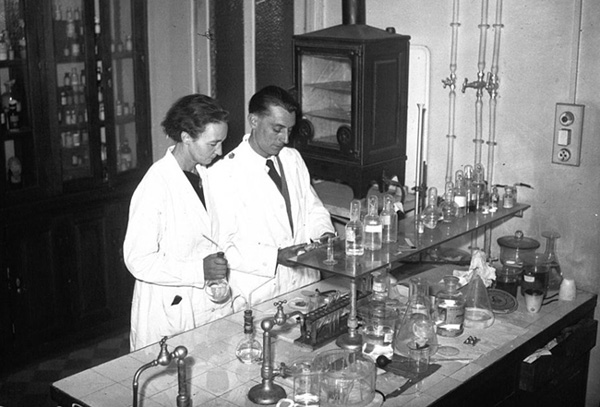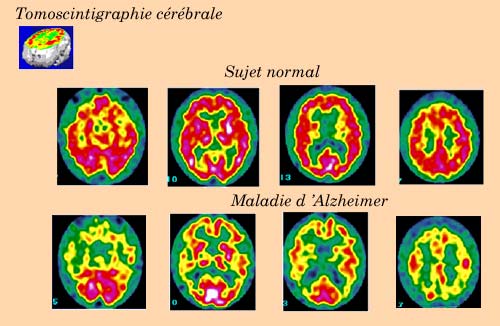The production at will of radioactive isotopes
In the first days of 1934, Frederic and Irene Joliot-Curie announced in a note to the « Academie des Sciences » that they had created a radioactive atom which did not exist in nature.
The discovery of artificial radioactivity was of vital importance,. It means that the property of radioactivity is not limited to the handful of radioelements found in nature. Radioactivity is, in fact, a fundamental property of matter. At the time of the creation of the Universe, many radioactive isotopes were produced. Most of them with short half-lives have gradually disappeared. Others, whose half-lives were sufficiently long, can still be found today. Producing radioisotopes via nuclear reactions is equivalent to recreating those short-lived radioactive isotopes that have since disappeared.

Irène et Frédéric Joliot-Curie
Irène et Frédéric Joliot-Curie in their laboratory in 1935, soon after their discovery.
© BNF
Man is now able of obtaining radioisotopes needed as tracers and markers. This allows scientists, engineer and doctors to follow the evolution of any marked substance.
The applications are numerous and, for the most part, have been mastered. A great deal of caution is nonetheless required: the large-scale production of isotopes can be dangerous, and a relevant of protection is needed.
Discoveries made in the exact sciences always lead to advances in the others. Nuclear physics is no exception, as the discovery of artificial radioactivity allowed for impressive advances in a wide range of other fields.

A tool for the exploration of the human brain
The ability to produce specific radioactive isotopes at will has revolutionized biology and medicine. Scintigraphy techniques are widely used in diagnostics and in exploring the way living bodies work.
© A.Aurengo/La Pitié-Salpétrière
The most spectacular, perhaps, are those advances in the field of biology, where radioactive tracers have allowed for an explosion in the information available on the functioning of living organisms.
A French pioneer in nuclear medicine, Maurice Tubiana has said: « It is often said that the first half of the 20th Century was dominated by advances in physics and the second half dominated by advances in biology. If this is true, which I believe, then we owe these developments to the discovery of artificial radioactivity. »
The development of cerebral tomoscintigraphy scans is a telling example.
TO KNOW MORE ABOUT THE ARTIFICIAL RADIOACTIVITY DISCOVERY :
– 1) : Irène and Fréderic Juliot- Curie
– 2) : The scope of artificial radioactivity
These documents are in french, waiting translations
Other articles on the subject « Discoveries »
Marie Curie
Marie Curie Marie Sklodowska-Curie had an exceptional destiny. Born in Poland, she came to gradua[...]
Three radiations
Understanding the nature of alpha, beta and gamma rays In the years following the discovery of ra[...]
Discovery of the Nucleus
A new vision of the atom In 1911, Rutherford, Marsden and Geiger discovered the dense atomic nucl[...]
Ernest Rutherford
In October 1895, landed in England a 24 years-old young New Zealander. His name was Ernest Ruther[...]
Rutherford’s experiment
The experiment which proved the existence of a nucleus in the atom In 1908, Ernest Rutherford rec[...]
The neutron : Chadwick
A close competition between great physicists … James Chadwick, who discovered the neutron i[...]
Radium and Medicine
A short history: first steps in nuclear medicine … Everyone knows that the discovery of rad[...]
The Neutrino Hypothesis
The remarkable story of the neutrino The study of radioactive disintegrations had established tha[...]
Fission discovery
A nuclear phenomenon that escaped the hands of physicists In the years spanning 1934 to 1938, Enr[...]
Enrico Fermi
A genial experimenter and theoretician Enrico Fermi (Rome, September 29, 1901 – Chicago, No[...]